It wasn’t too long ago when every business claimed that the key to generating new customers was in the quality of the product or service they delivered.
But, things have changed.
Now, an even more important success factor has appeared.
Today, it’s all about providing the best customer experience.
When Econsultancy and Adobe conducted their Annual Digital Trends report, they asked B2B companies to state the single most exciting opportunity for the upcoming year.
The results?
Customer experience (or CX) came in first, for the third year in a row, beating out content marketing, video marketing and automation.
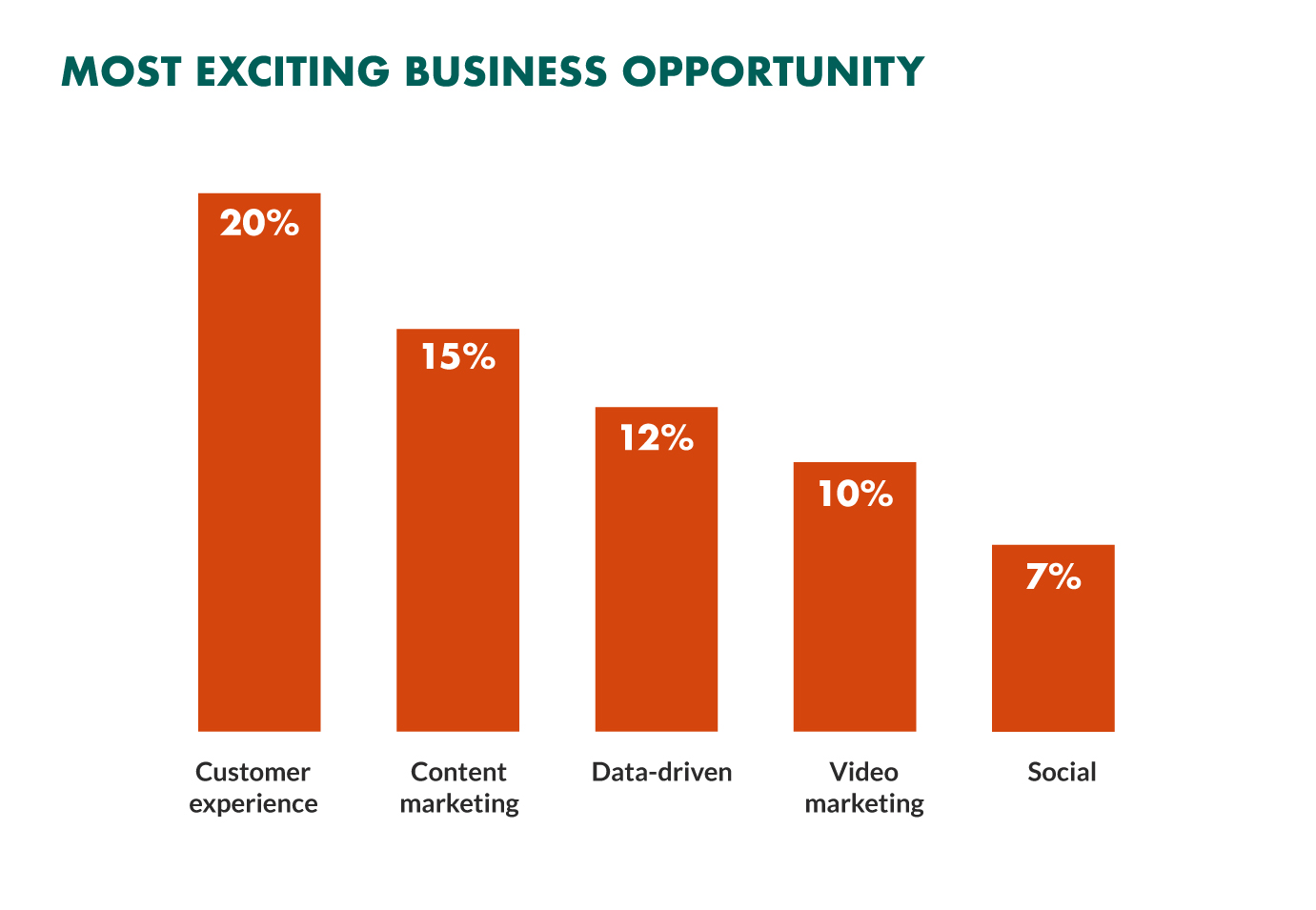
It’s no surprise that customer experience is so exciting.
The Temkin Group found that companies that earn $1 billion annually can expect to earn, on average, an additional $700 million within 3 years of investing in customer experience.
For SaaS companies in particular, the same 3 year investment in CX leads to an additional $1 billion.
That’s right.
Investing in CX initiatives gives your business the potential to go from Millions, to Billions, within 36 months.
So, where is this revenue growth coming from?
The customer’s wallet.
A good customer experience means your customers will spend more.
In fact, 86% of buyers are willing to pay more for a great customer experience. The more expensive the item, the more they are willing to pay, according to a research from PWC.
For example, customers are willing to pay a price premium of up to 13% (and as high as 18%) for luxury and indulgence services, simply by receiving a great customer experience.
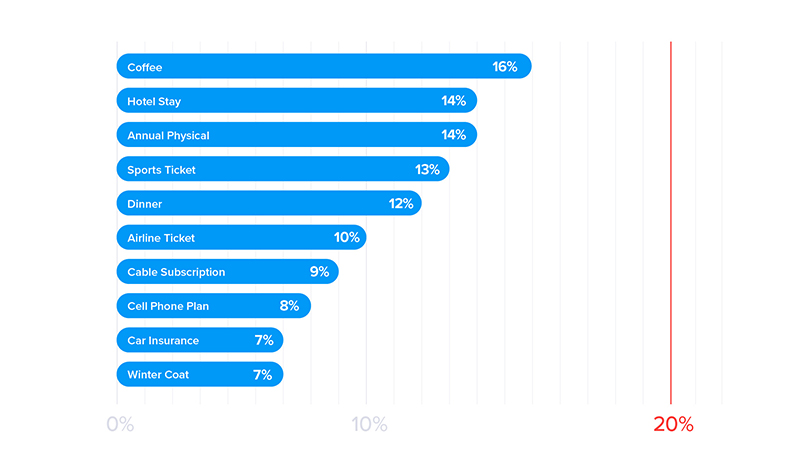
Furthermore, a Walker study found that by the end of 2021, customer experience will overtake price and product as the key brand differentiator.
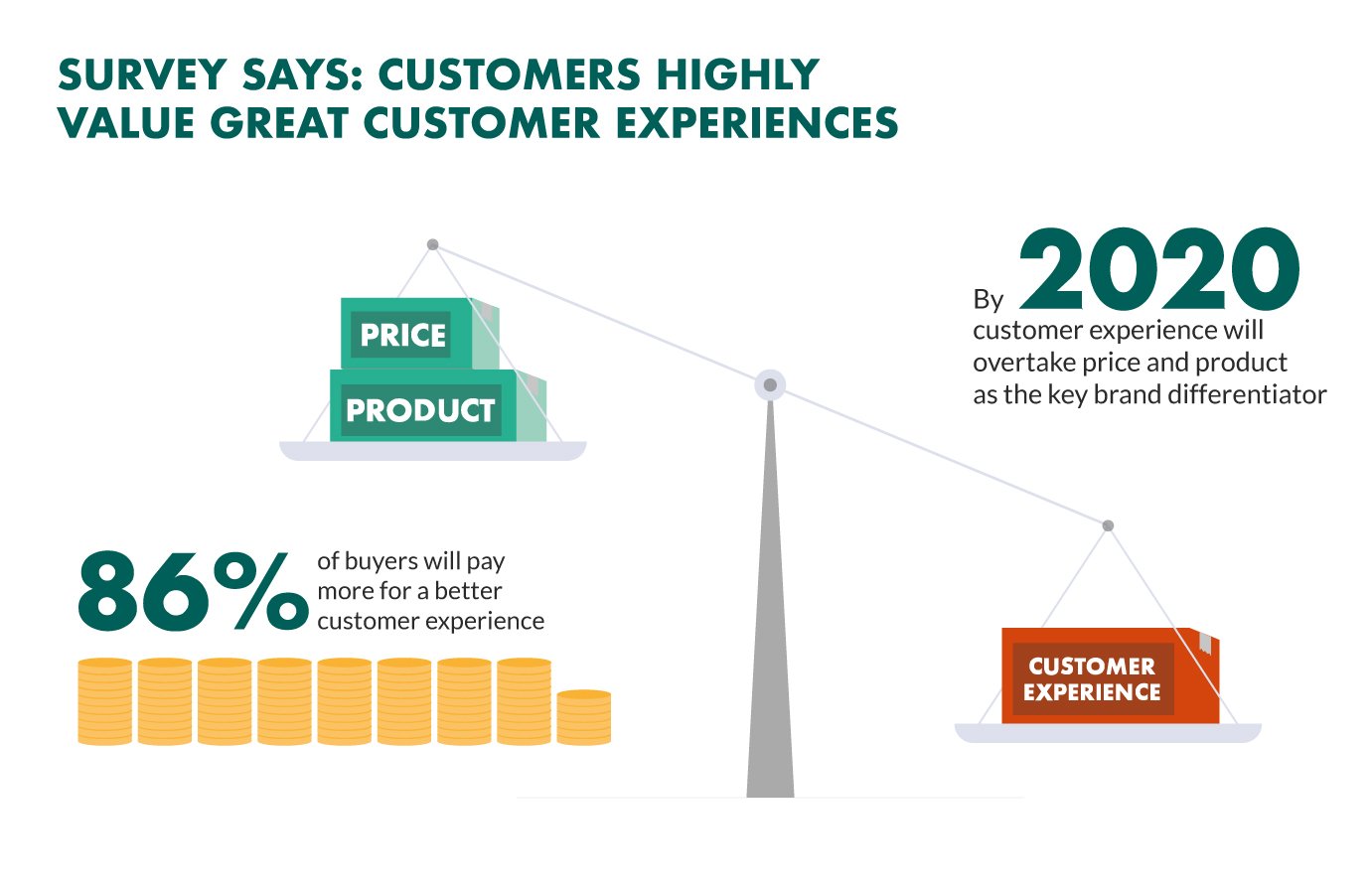 If CX is to play an important part in your 2021 plans (and it should!), then this article is for you as we share the top customer experience trends for the upcoming year.
If CX is to play an important part in your 2021 plans (and it should!), then this article is for you as we share the top customer experience trends for the upcoming year.
What is customer experience?
Customer experience is your customers’ perception of how your company treats them. These perceptions affect their behavior and build memories and feelings that drive their loyalty.
In other words – if they like you and continue to like you, they are going to do business with you for a long time and recommend you to others.
So, it’s easy to see why it’s important for so many companies to focus on CX.
But, in order for your customers to like you, you need to get to know them, and then use this knowledge to deliver personalized experiences across the entire customer journey.
But gaining this in-depth knowledge about your customers isn’t something that just happens. You need to collect customer data and bring out valuable insights from that data with speed and precision.
The good news is that it doesn’t matter what kind of business you’re in - improving the experience for your customers has been proven time and time again to increase retention, satisfaction and revenue.
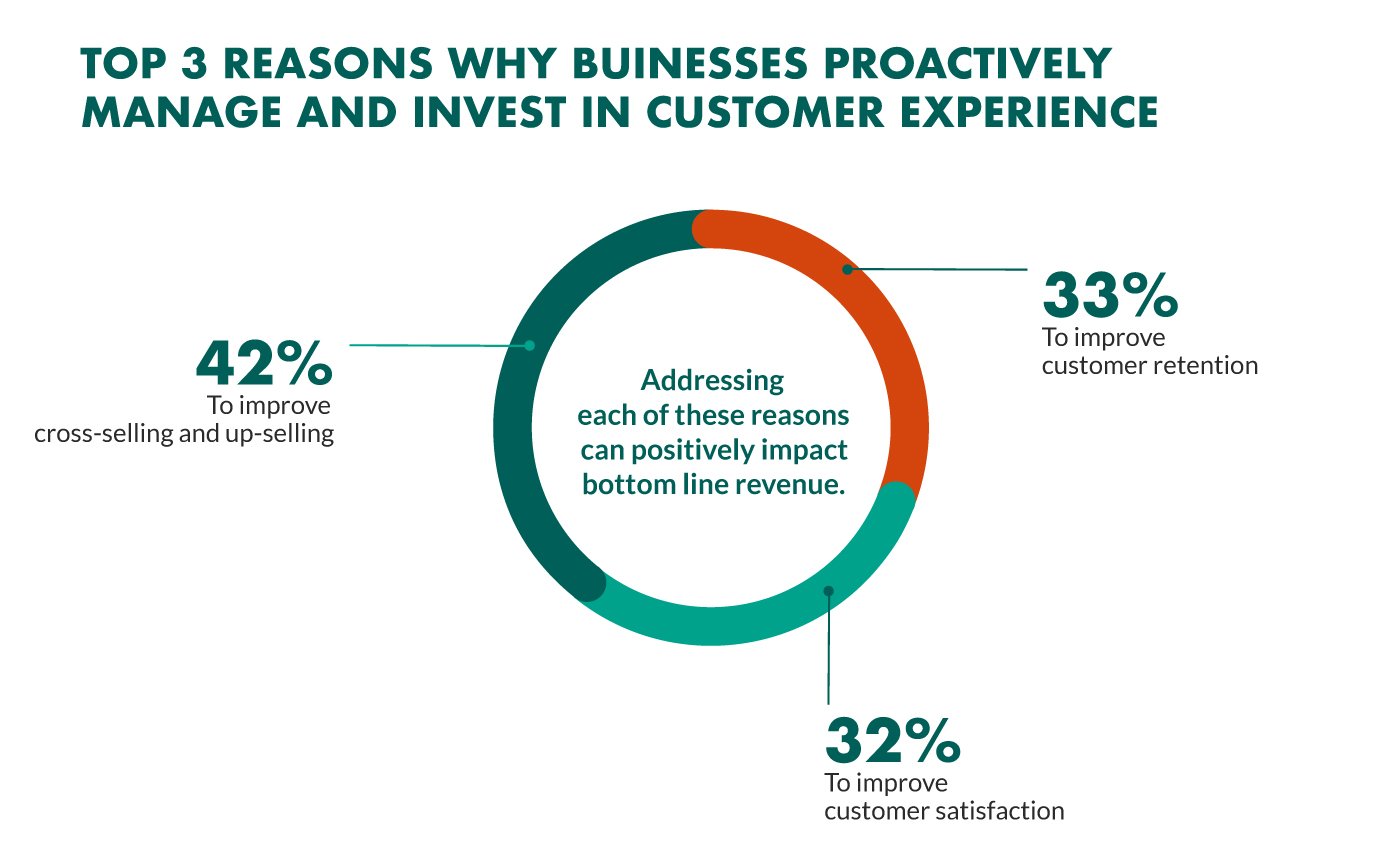
So, what can you do to create a positive customer experience?
Let’s take a look at the five most important CX trends.
1. Customer experience is the new battlefield
No one wants to do business with a company that treats you poorly.
And how you feel after an interaction with a customer service center has a huge impact on your future purchase decisions. A good interaction keeps you happy and satisfied, while a poor interaction could lead to you stop doing business with that company again.
It’s because of these extremes why 88% of companies now prioritize customer experience in their contact centers. Yes, it’s that important.
And it’s easy to see why. If a customer is choosing to do business based on CX, then that’s where you have to stand out!
In fact, more than two-thirds of companies now compete primarily on the basis of customer experience – up from only 36% in 2010!
Therefore, if you want your customers to have a positive experience, you have to invest in it. In fact, 62% of companies will now invest to meet the changing needs of customers.
So, where do you begin?
According to Gartner’s research, companies that successfully implement customer experience projects begin by focusing on how they collect and analyze customer feedback.
Whether you use surveys, forms, or Net Promoter Score (NPS) programs, read through their comments, suggestions and opinions to see what they expect from you. Then, invest in those projects to meet their expectations.
2. The importance of multi-channel servicing will increase
Companies interact with their customers across multiple channels, which can be through forms on their website, live chat, social media and more.
However, while customers may be positive and accept different service levels from different channels, they also expect that the communication remains consistent.
Are you providing a consistent experience across all channels, both online and offline?
It can be challenging, but the gold standard here is IKEA.
If you visit any IKEA store around the world, you will get the same experience. IKEA invests heavily into customer experience and the pay has been huge. Not only is IKEA one of the most beloved companies in the world, but their annual revenues have now reached more than $40 billion worldwide.
And it’s this level of execution and result that is driving the investment in the omni-channel experience.
In fact, in their 2020 report, PWC found that the number of companies investing in the omni-channel experience has jumped from 20% to more than 80%.
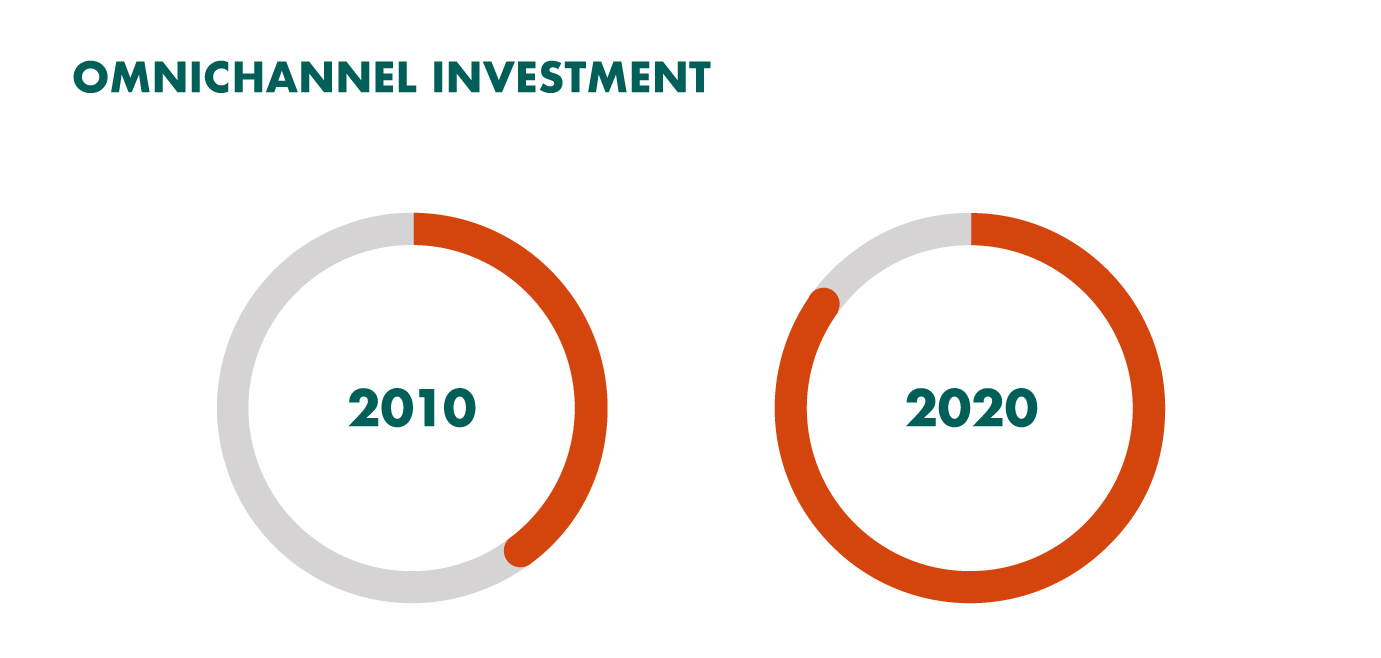
Adding to this, Adobe recently found that companies with the strongest omni-channel customer engagement strategies enjoy a 10% Y-O-Y growth, a 10% increase in average order value and a 25% increase in close rates.
3. Mobile customer experience is priority
When it comes to providing a positive experience across different channels, mobile customer service is expected to soar.
The reason is simple – a bad mobile experience can do serious damage to your brand!
For example, 57% of customers won’t recommend a business with a poorly designed website on mobile. And if a website isn’t mobile-friendly, 50% of customers will stop visiting it, even if they like the business.
By not providing a positive mobile experience, you’re putting business growth in jeopardy, as the graphic below shows.
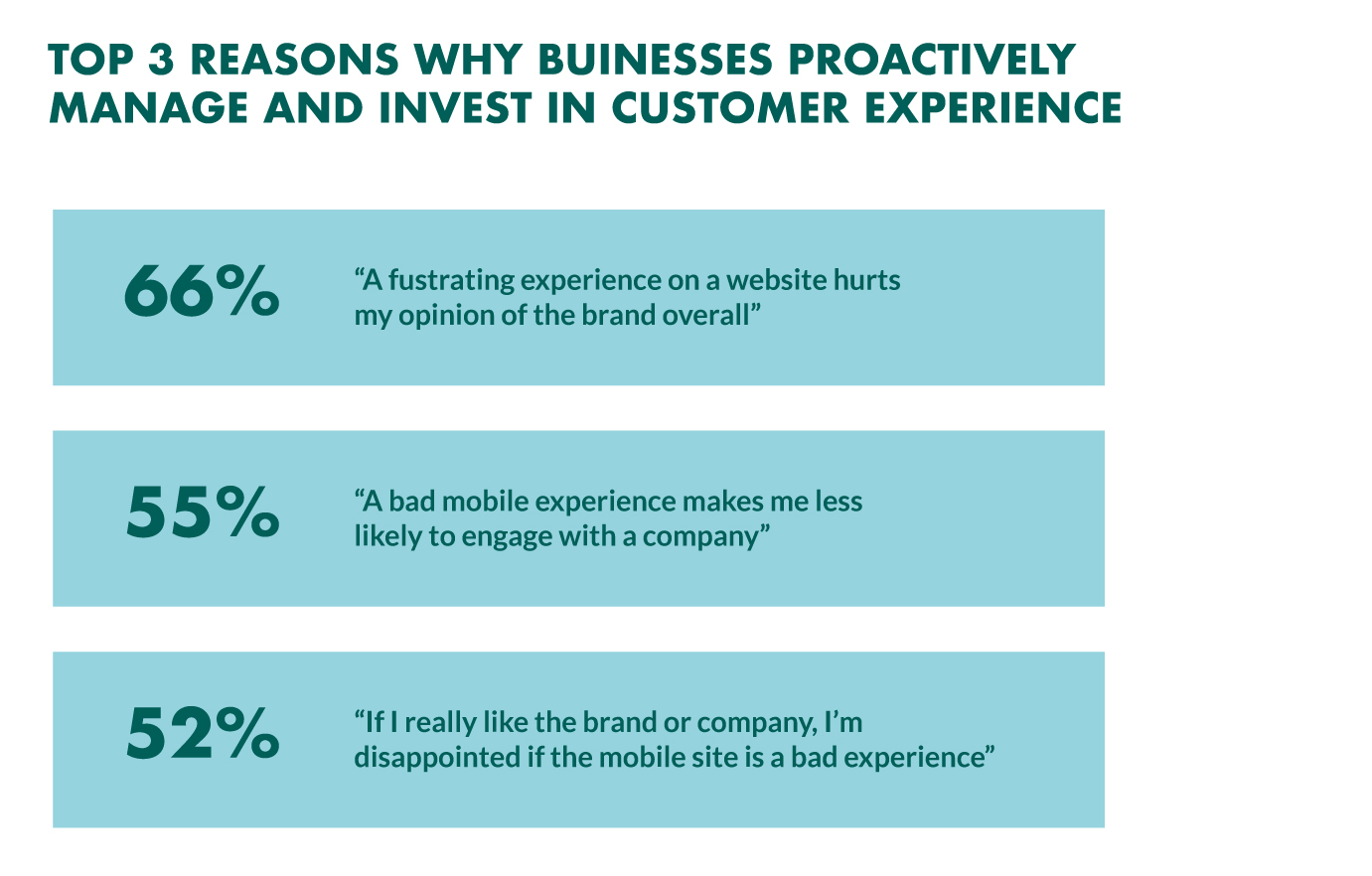
It’s no longer the question whether the mobile experience is important or not.
We know it is!
According to Stat Counter, 52% of all internet traffic now comes from mobile, with desktop usage on a trending decline.
So it comes as no surprise why 84% of companies who claim to be customer-centric are now focusing on the mobile customer experience.
However, for companies that aren’t, they’ve been slow to adapt to this trend – especially when it comes to customer support – as an overwhelming 90% of customers report having a poor experience when seeking customer support on mobile devices.
The most common complaints being navigation, site search and load times.
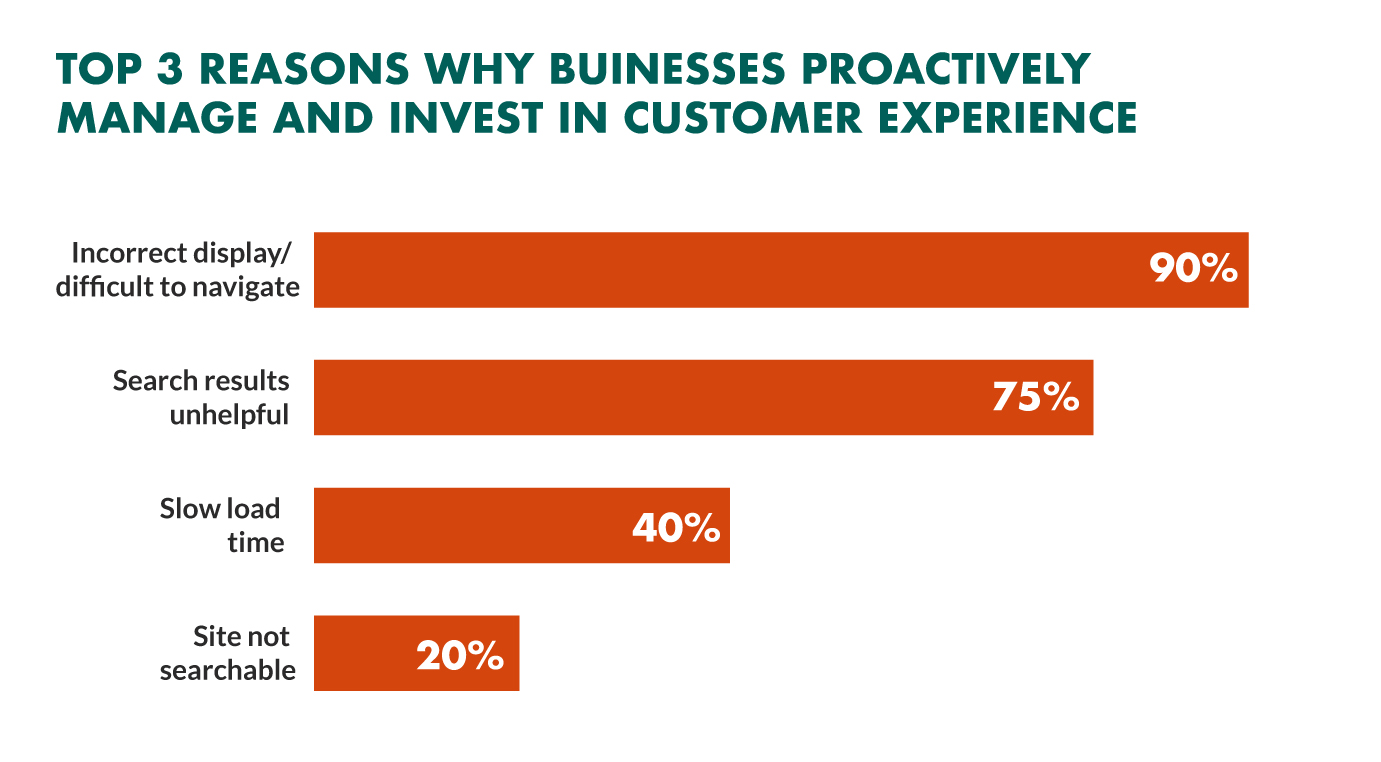
There is a huge gap that needs to be taken seriously.
If your customers cannot navigate your website with ease and find what they are looking for, then you frustrate them. And you lose them.
4. Customer frustration will lead to churn
According to Esteban Kolsky, 72% of customers will share a positive experience with 6 or more people. On the other hand, if a customer is not happy, 13% of them will share their experience with 15 or even more.
The challenge here lies in the fact that, in most cases, customers don’t tell you they’re unhappy. In fact, only 1 in 26 unhappy customers actually complain.
The rest, they just leave, Kolsky claims.

For many companies, the absence of negative feedback is a sign of satisfaction.
But, as the research shows, this might not be the case. Your customers may not be happy, or worse, they’re sharing their bad experiences with others.
Customer expectations are at an all-time high and it’s a tough time for companies to meet and exceed them.
Even if you provide a positive customer experience 9 out of 10 times, that one time you do not could be fatal.
In their future of CX report, PwC surveyed 15,000 consumers and found that 1 in 3 customers will leave a brand they love after just one bad experience.
What constitutes as a bad experience?
Sometimes, it’s as simple as poor follow-up.
Our own research found that very few companies follow up with their customers. Put simply, you can avoid many of these poor experiences by sending a follow-up email.
5. Self-service help will be the first choice
In 2021, companies should ensure that customers are able to find answers to their questions using a wide-range of self-service options.
Today, 67% of customers prefer self-service over speaking to a company representative.
Furthermore, 91% of customers would use an online knowledge base, if it were available and tailored to their needs.
Customers are willing to find the answers themselves. So much so, that by 2030, Gartner estimates that a billion service tickets will be raised automatically by customer-owned bots.
To handle this demand, companies are turning to Artificial Intelligence (AI).
In 2018, 25% of all customer interactions were automated through AI and machine learning. With 90% of companies now planning to deploy AI within 3 years, this number is expected to grow to 40% by 2023.
In the short-term, you need to make sure that when a customer has a problem, the right tools are available to them, so they can solve it, themselves.
In the long-term, you need to think about how AI and technology can help you improve customer experience.
Conclusion
With 9 out of 10 businesses competing mainly on customer experience, it’s the organizations that take customer experience seriously that will stand out from the noise and win loyal customers over.
One thing is for sure, in order to deliver a positive experience, you have to know your customers better than ever before.
This means creating complete customer profiles that help you understand and measure your customers’ behavior at every touch point, and across multiple channels. One way to handle this is by using a CRM.
Once you know your customers well enough, you can use that knowledge to personalize every interaction. Customers these days have more power and choices than ever before. Thus, you are responsible for understanding and acknowledging their needs.
If you make sure their interaction with your company is smooth, pleasant and continuously improving, you will drive brand loyalty. If not, you’ll give your competitors the best gift you can – your customers.
Do you want to improve the experience you deliver to your customers? Find out how with SuperOffice CRM. Contact us today to learn more.
